We’re going to start with the definition. What is run?
In terms of biomechanics, running involves a cyclic motion where one foot leaves the ground, moves through a swing phase, and then lands again.
Run technique” typically refers to the specific mechanics and form used by individuals while running. It involves the coordinated movement of various body parts to optimize performance, reduce the risk of injury, and enhance efficiency.
It’s important to note that individual differences exist, functional limitations and what works for one person may not be ideal for another. Some runners may benefit from professional coaching or gait analysis to identify and address specific issues in their running technique. Additionally, gradual adjustments to technique are recommended to avoid overloading muscles and joints.
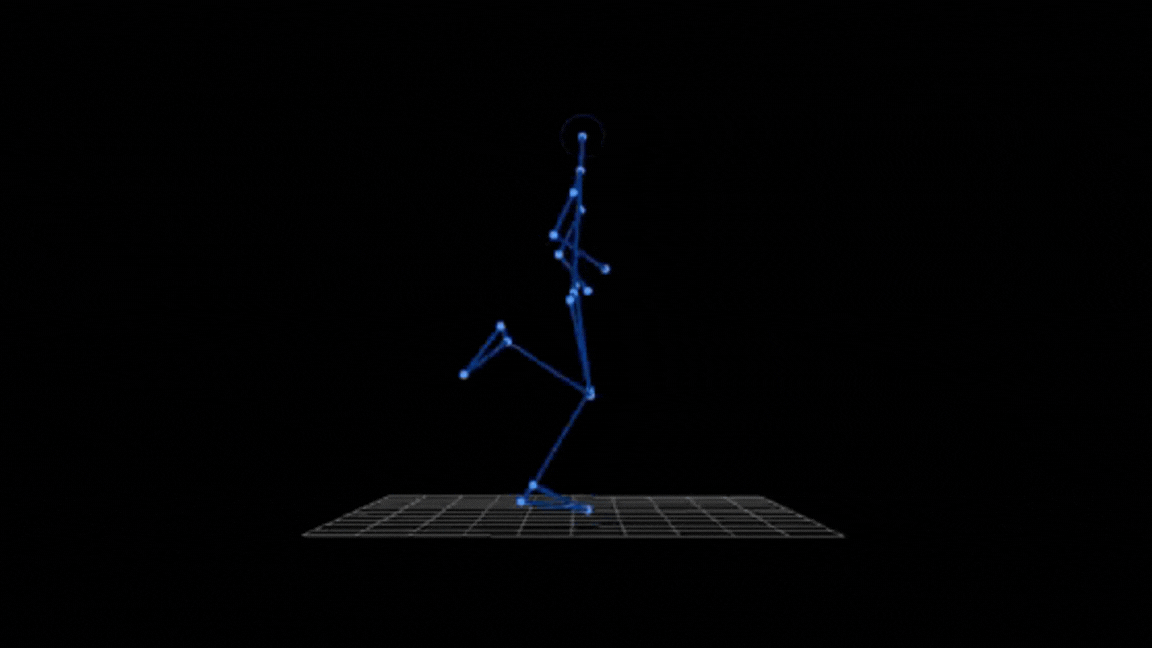
Let’s how we can improve our run technique and save some precious seconds.
Running economy.
Running economy refers to the energy cost of running at a specific pace. It is influenced by various factors that can affect the efficiency of a runner’s movement and overall performance. Here are some key factors that contribute to running economy.
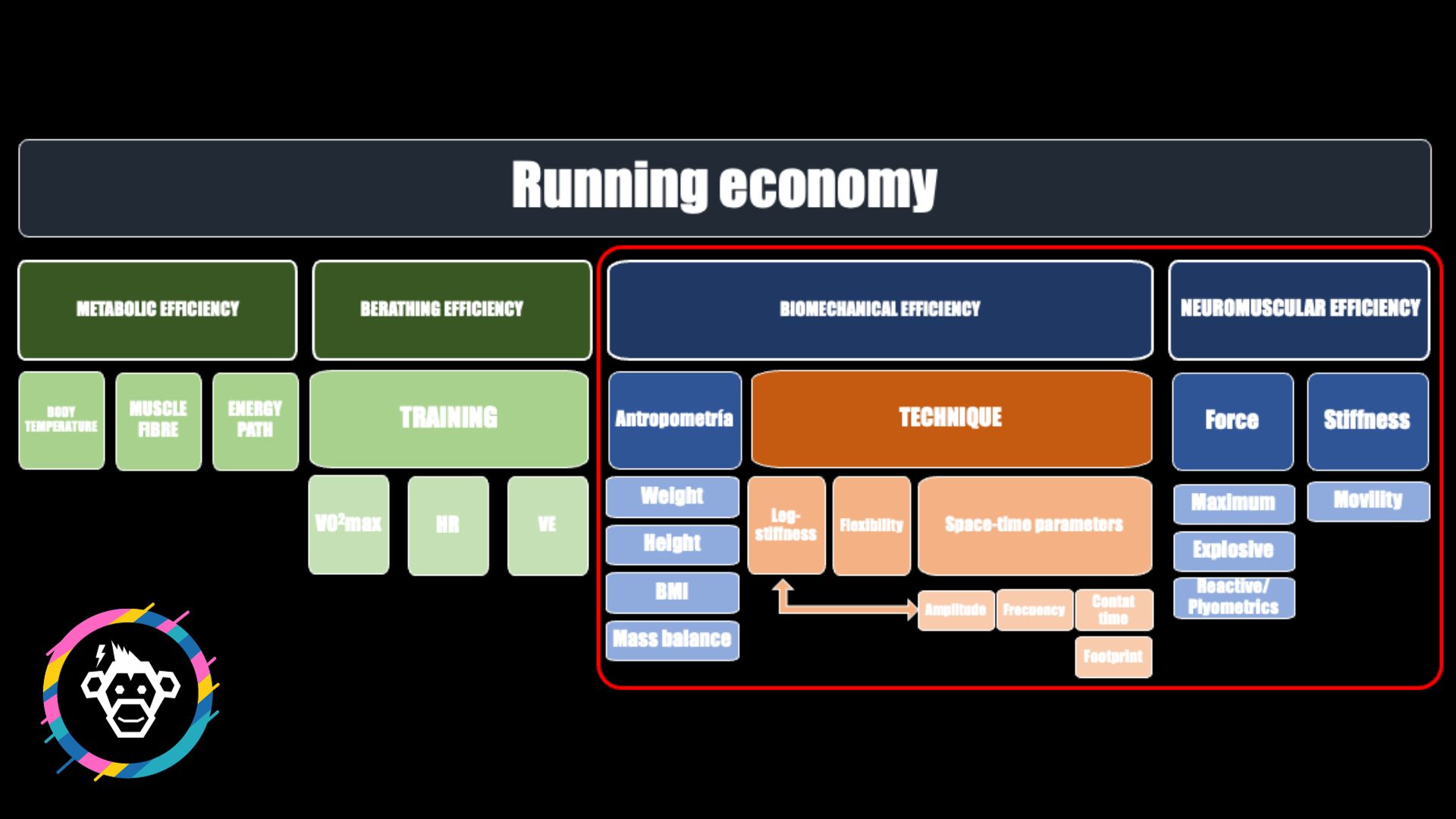
We will focus in run technique;
Technique.
It is the correct execution of movements and application of forces by the athlete.
With a properly technique we will get the following improvements.
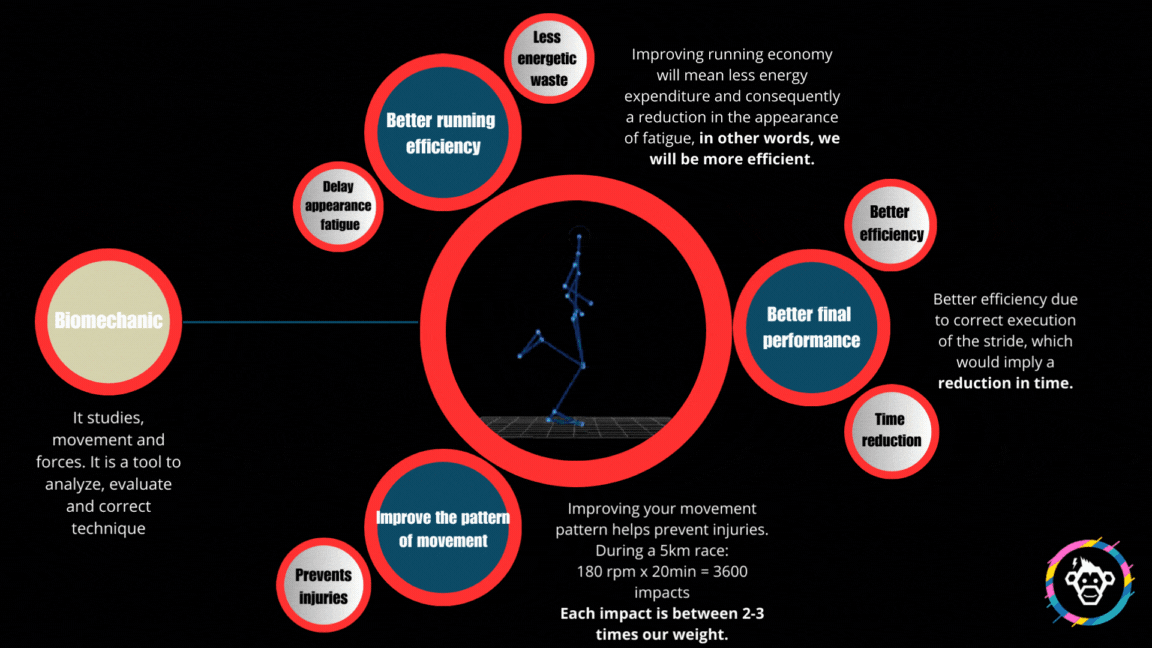
Running Phases.
The run phases have been divided in phase support;
- Contact. This is the beginning of the stance phase when the foot makes contact with the ground.
- Support. Once the foot makes initial contact, the body weight is transferred onto the supporting leg.
- Propulsion. The propulsion phase begins with pre-swing, where the supporting leg continues to push off the ground.
And phase of the flight, when both feet are not in contact with the floor.
Below you can see an example.
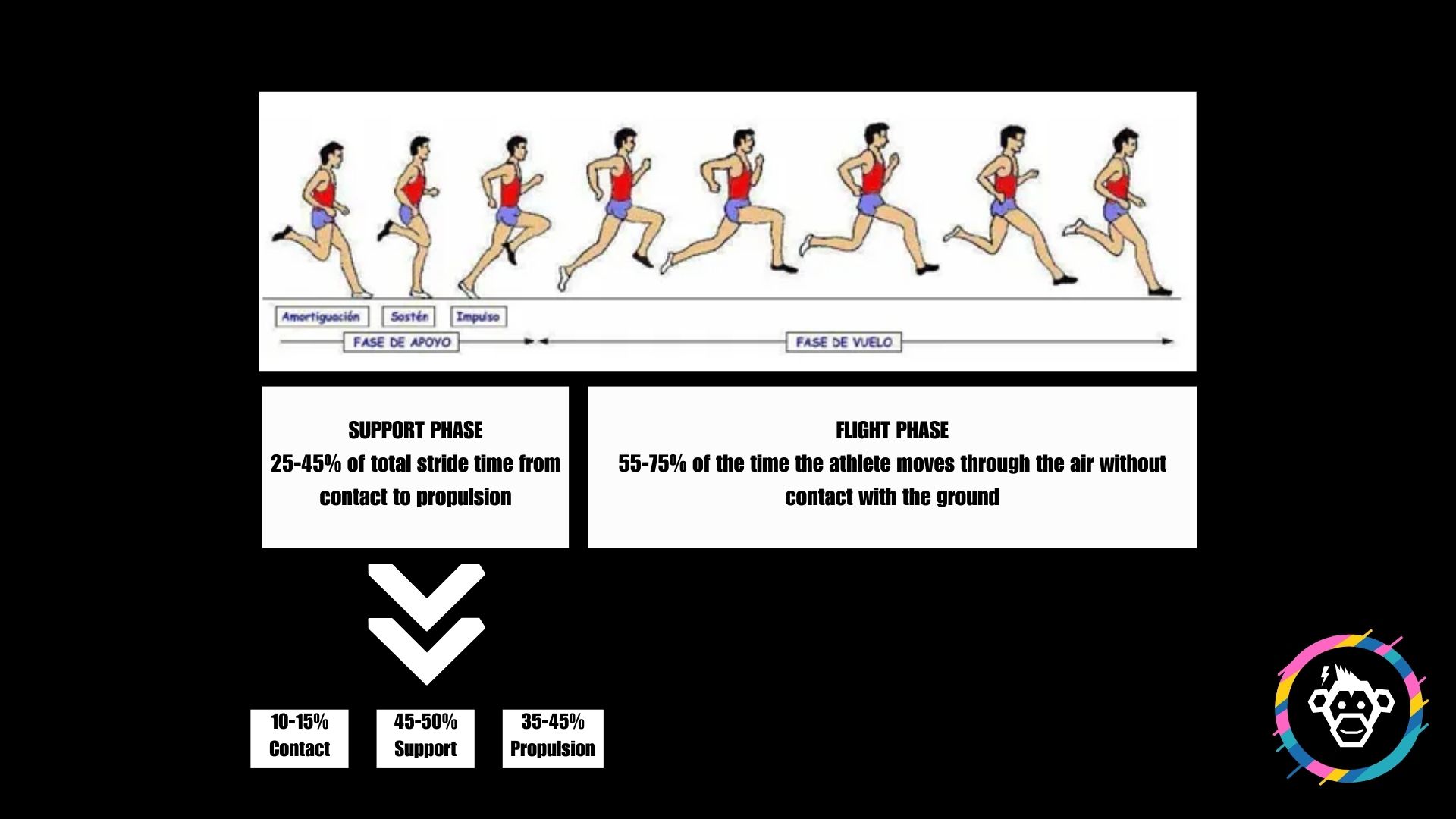
Running Phases II.
The run phases have been divided in phase support;
- Step lenght. Step length refers to the distance covered horizontally with each step taken during walking or running
- Stride length. Stride length is involves the measurement of the distance covered from the initial contact of one foot to the subsequent initial contact of the same foot. The key difference is that stride length encompasses both the step taken by one leg and the step taken by the other leg during the gait cycle. In other words, one stride consists of two consecutive steps, one with each leg.
StrideLength=StepLength(Right)+StepLength(Left)
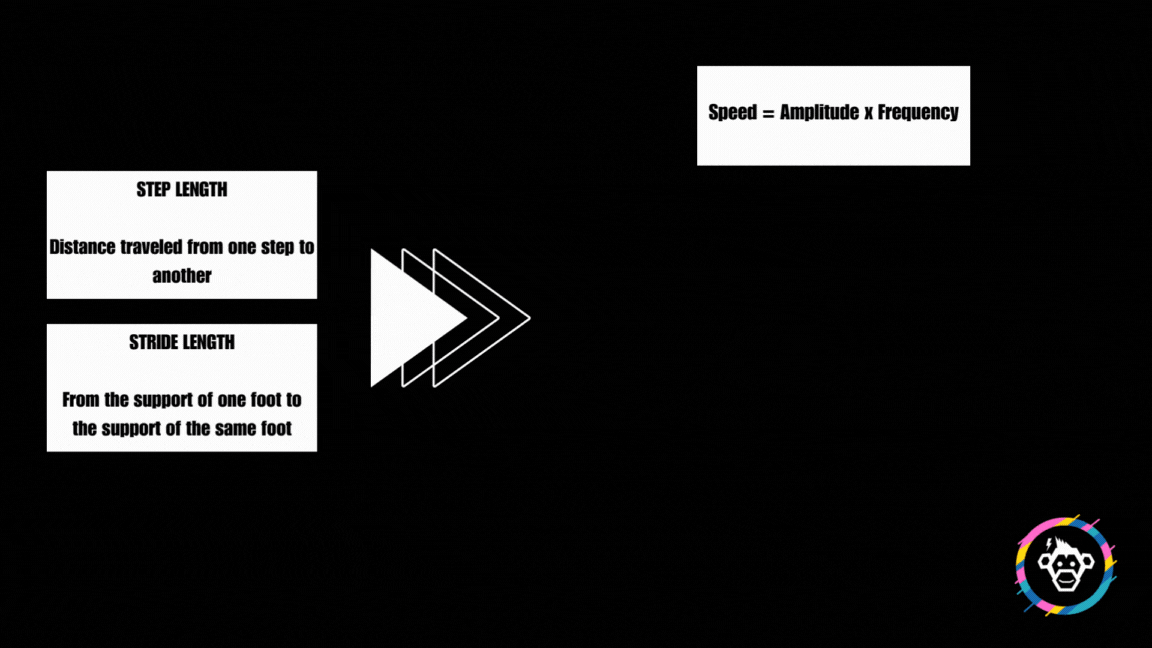
Counter opposite forces
What is it?
In classical mechanics, Newton’s third law states that for every action, there is an equal and opposite reaction. This principle applies to forces: if object A exerts a force on object B, then object B simultaneously exerts a force of equal magnitude in the opposite direction on object A.
In biomechanics, when we talk about movements like walking or running, there are often opposing forces involved. For example, during walking, there is a push-off force from the foot against the ground, and there’s an equal and opposite reaction force from the ground pushing back against the foot.
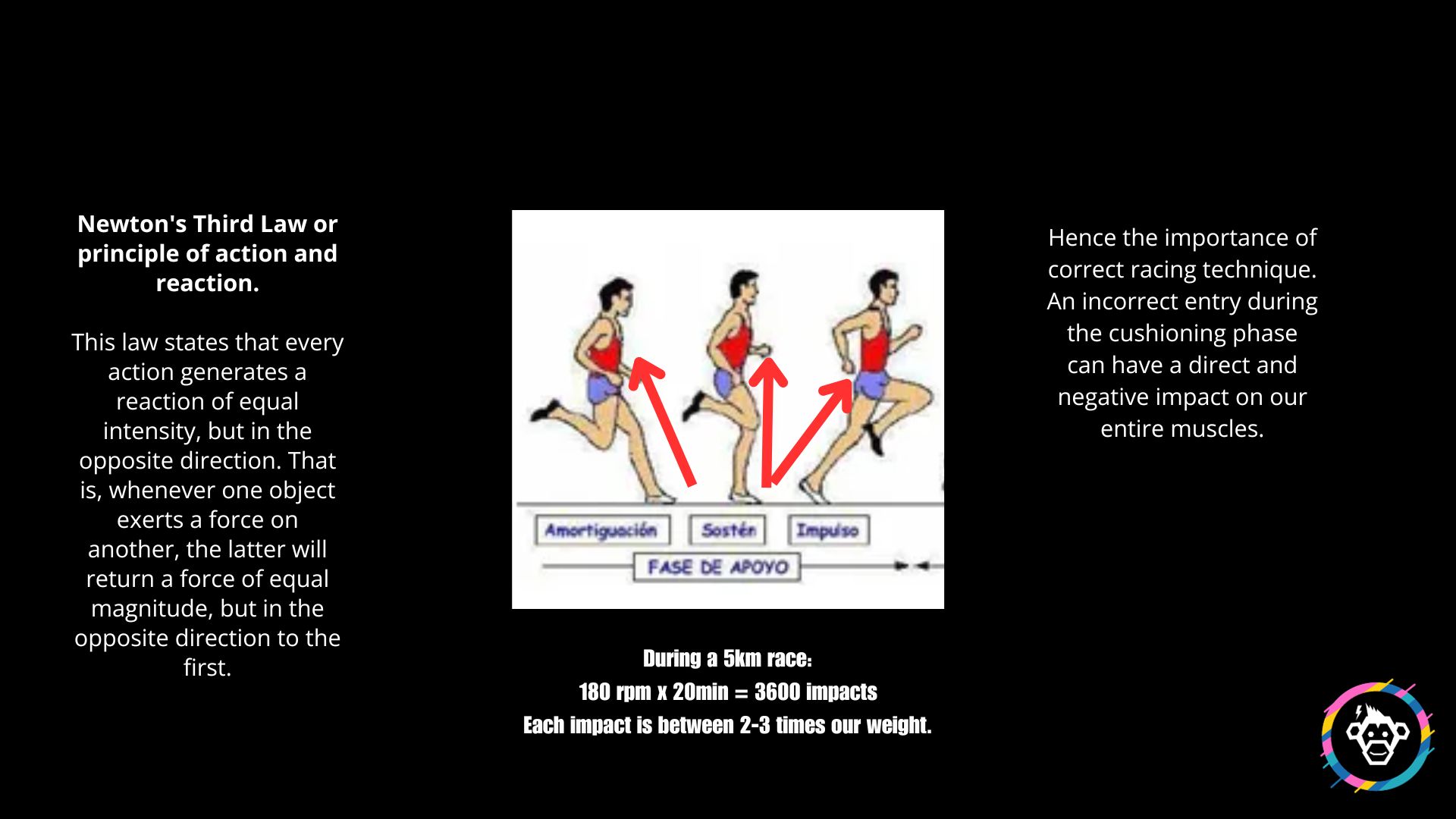
Analyzing the stride
It’s important to note that analyzing the stride is a comprehensive process, and changes to running mechanics should be made gradually to avoid injury. Runners seeking to optimize their stride may benefit from professional gait analysis, which can provide more detailed insights and recommendations based on individual biomechanics. In addition, we should analyze the functional limitations before start.
“Gradual adjustments to technique are recommended to avoid overloading muscles and joints”
Below we can see the explanation of MSA, SAT, ROS and the optimal value for ROS/MSA.
This is the most important topic in the stride analysis.
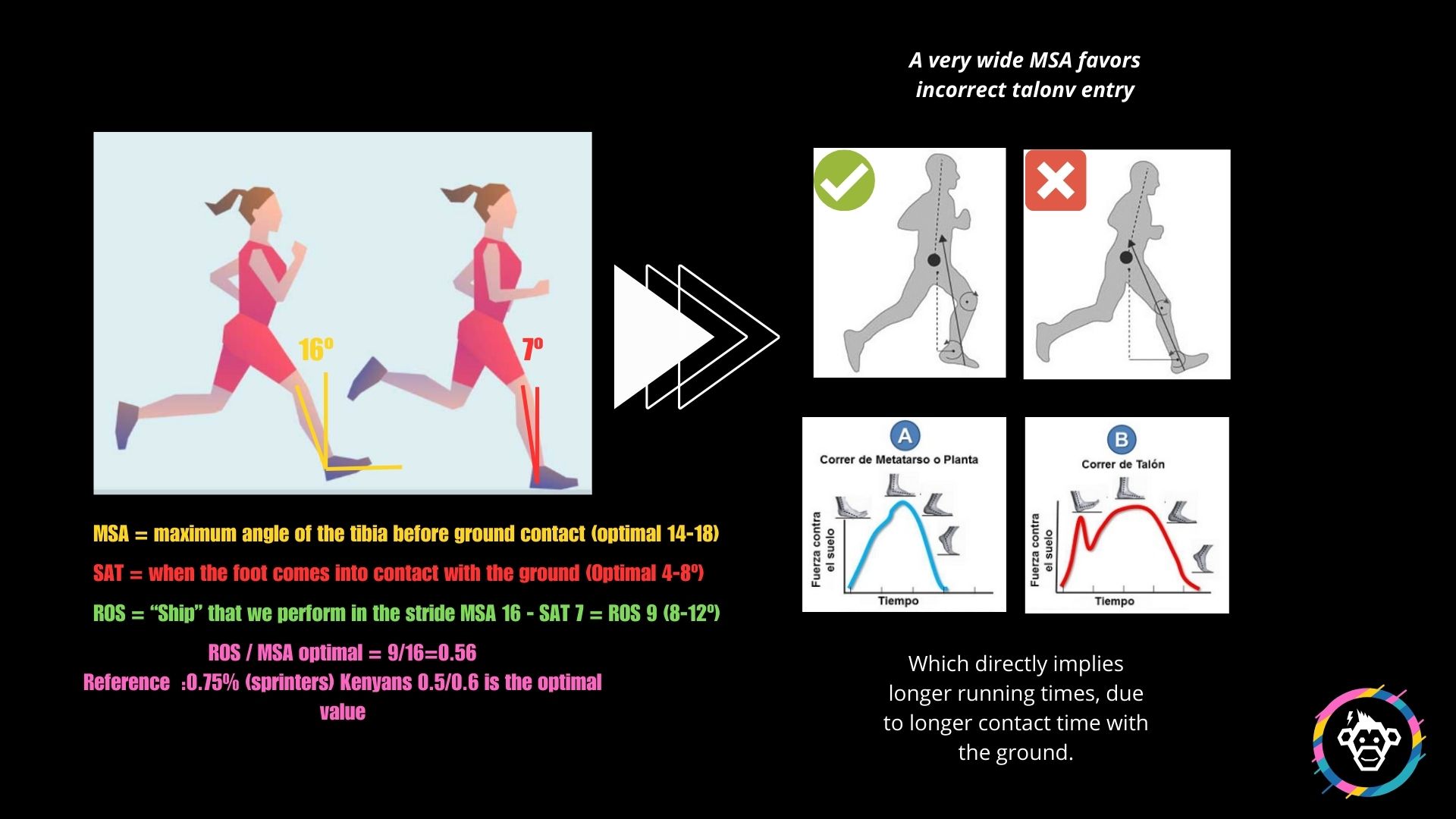 Some examples are;
Some examples are;
- MSA: Maximum angle of the tibia before ground contact. Optimal value 14 – 18.
- SAT: When the foot comes into contact with the ground. Optimal value 4 – 8.
- ROS: “Ship” that we perform in the stride; MSA 16 – STA 7 = ROS 9. Optimal value 8 – 12.
- ROS / MAS = 9/16=0,56. As a reference for sprinters the optimal value is 0,75 and for Kenyans 0,5/0,6.
Shock absorption
The shock absorption phase in running refers to the moment when the foot makes contact with the ground during each stride. During this phase, the body absorbs and dissipates the impact force generated by the foot striking the ground. Muscles, joints, and soft tissues act as natural shock absorbers, reducing the load on the joints and contributing to a smoother transition between strides. The ability to effectively absorb and manage this impact force is essential for injury prevention and optimizing running efficiency.
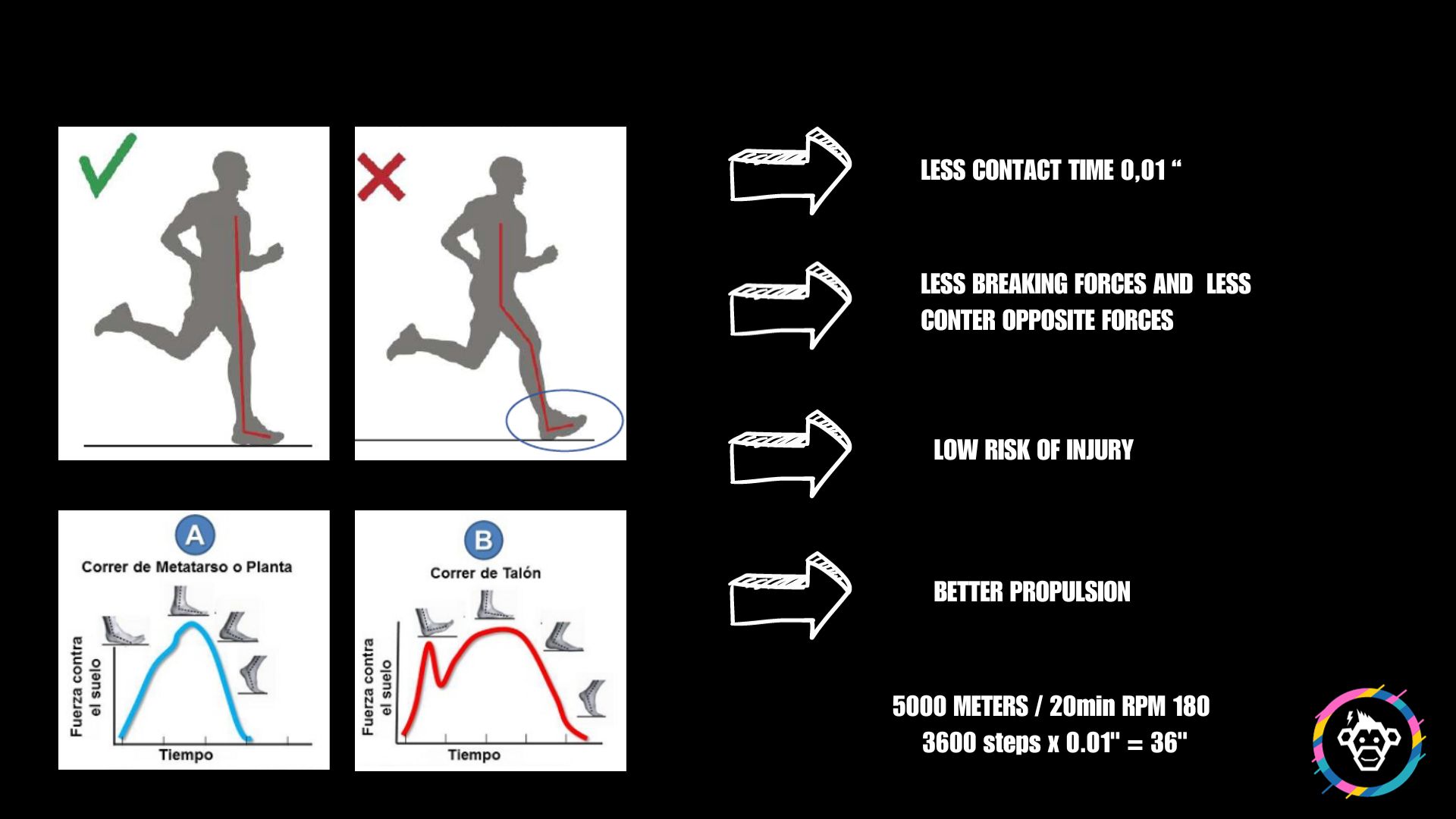
How to start to improve our run technique?
Below you can see some exercises to improve our run technique.
Some exercises to explosive force.
Below you can see some exercises to improve our power stroke.
If you have questions don’t hesitate to write me!
